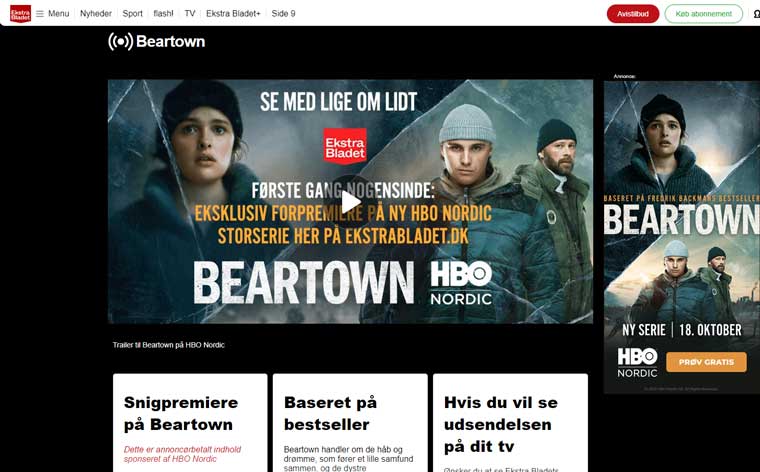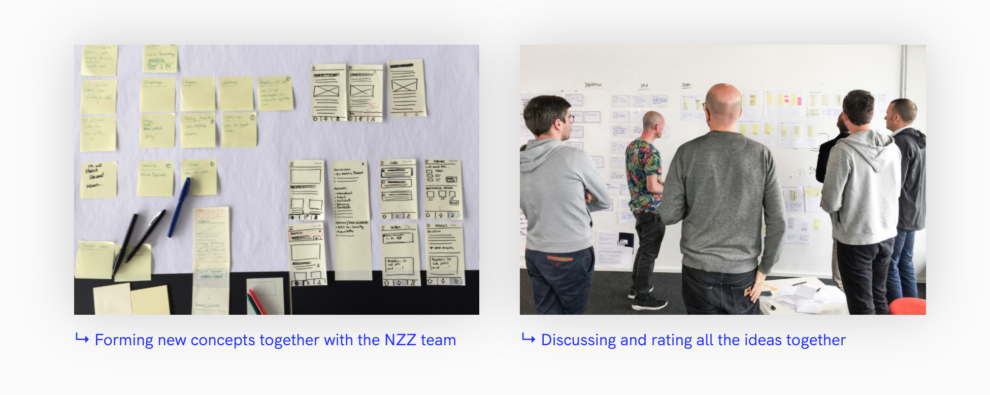Blog
5 approaches publishers use to kick off product innovation
Earlier this year, we wrote about the increased awareness around product thinking in newsrooms. Many publishers struggle with identifying how to position their “product” and how to develop new ones through innovation.
With the summer being a time for preparation and reflection for many publishers and newsrooms, it’s ideal for kicking off and testing new ideas. If you plan to test a new idea with premium digital editions or personalisation, it’s the best time to contact our team.
As we enter June and a world that seems more predictable, we explore 5 ways publishers can use innovation to kickstart their new product development process.
“In news, we are redoing our product market fit”
Mayur Gupta, Chief Marketing and Strategy Officer at Gannett
Why should you innovate?
Before starting innovation, it is important to decide as a team why you are choosing to innovate and what your innovation goal is. After deciding this, it is important to engage hearts and minds. Jane Barrett, Global Editor of Media News Strategy at Reuters, believes that the DVP method is the best tool for innovative change.
- D: Dissatisfaction. When leading change, it is important to ‘create’ dissatisfaction. Point out the flaws of the existing system, and really establish why a transformation is needed.
- V: Vision. Focus on the vision. Make certain that those who will be expected to participate in the process understand what they are aiming for. Visualising the end result goes a long way toward ensuring motivation to see the process out.
- P: Process. Lay out the process and hammer out finer details. Your task is to overcome the source of dissatisfaction to fulfil the vision.
These discussions should then be followed with the question “How are we going to innovate?”.
Start with a Proof of Concepts
A proof of concept (POC) is a tool publishers can use to test a new design idea or assumption. It is also used to look at a product’s development potential. A POC gives an overview of a product in a new way.
By using existing materials, building a POC is the best way to see the underlying value of a product. The main reason behind choosing to develop a POC as an innovation experiment is to demonstrate functionality. A POC is also used to verify a certain concept or theory that can be achieved in development.
In Finland, Alma Media successfully used a POC to help the newsroom switch from intuition-driven to data-driven journalism culture. Through a set of algorithms that predict the value of content, they were able to demonstrate to the newsroom the value of using machine learning models in composing the day’s newspapers. This is something we also hear from our EngageReaders customers. They make use of the EngageReaders predictive models for determining article performance in their daily work.
On a journey to upgrade the edition reading experience for their 24 titles, American publisher Advance Local started last summer with a POC from Twipe.

Understanding the building blocks of the new technology they were going to roll out was crucial for clarifying the project team’s vision to internal stakeholders. The POC also provided a better view of any new requirements for our internal teams at Twipe. Often publishers go one step further and distribute the POC to panels of readers or focus groups and collect feedback. This feedback is valuable for the product development teams so that they can improve their future product.
Aside from helping to manage change, POCs can also help plant seeds of new, out of the box ideas. In a campaign with HBO Nordic, Danish publisher Ekstra Bladet reached more than 2 million Danes in one week upon turning their website into a Denmark’s biggest “Cinema”. The website featured autoplaying banner adverts and a new cinema style home page. The project culminated in the live streaming of the first episode of “Beartown”. Belgian publisher HLN looked outside the box and drove 2.2 million customers to their website whilst streaming a 24-hour concert.
Align through Design Sprints
Once a concept has been clarified, it is important to identify challenges and find solutions. Design sprints are a good tool for this. They help to answer critical business questions through collaboration and a clear framework. In its’ original structure published by Google Ventures, the design sprint is a 5-day process with a clear goal and checklist for each day.
Increasingly more publishers use design sprints to seek expertise from external sources and look beyond their own idea pool. Even in times of remote working, design sprints have seen traction and success.
Kleine Zeitung of Austria undertook a design sprint during COVID-19. They used this to create a tool that enabled regional businesses to appear on the Kleine Zeitung homepage. The publisher was extremely impressed by the results having never worked with a design sprint before. At the end of day 4, Kleine Zeitung had a product ready to go for testing with local businesses. Upon receiving feedback on this test, the team were armed with the tools ready to develop a better product.
Swiss publisher NZZ are well known for innovation. They have thrived through design sprints, even in the pandemic. Stay tuned to our blog for a deep dive into how they went about their pandemic design sprint.
Validate with a prototype
A working prototype shows how a product will be developed whereas a POC proves that a product can be developed. The creation of a working prototype is an essential part of product development. It allows innovators to visualise how a product will function.
It is a working interactive model of the end product that gives an idea of the design, navigation and layout. A working prototype therefore plays an integral part in product testing, performing trials, pitching and market research.

In Germany, DuMont’s Kölner Stadt Anzeiger ran a prototype for targeting readers at risk of churn with targeted communications. They used our Readers@Risk algorithms to detect which readers had been inactive for a long period of time and were at risk of lapsing with or cancelling their subscription. They then used messages to reach those readers and drive re-engagement. After successful prototypes, this process is moving into a further phase of automation.
For former CEO of Mozilla John Lilly, receiving early validation or feedback through a prototype is an absolute necessity.
“Get to a working prototype as quickly as you can … so that you can tell what’s happening and figure out whether you’re on the right track or not.”
John Lilly, Former CEO of Mozilla
US-based Insider used prototypes amongst loyal subscribers, engaged but non-paying members and casual readers when rebuilding their new app. With the ultimate aim of focusing on subscriber growth and retention, the 10-week design journey helped them to see what readers liked and what they didn’t. Their prototype saw them edit various features including simplified navigation and minimised distractions. Following the working prototype, the app was then switched to being the main Insider app and has seen a 75% growth in gross new app subscriptions.
Explore with Research Projects
Taking part in a research project can be seen as a more traditional form of innovation. It remains, however, one of the most well-known and commonly used innovation methods.
Research projects tend to bring together different departments or even different publishers in joint projects with tech companies or academics to focus on a specific area of innovation. The benefits of these are often the varying backgrounds of each partner and their commitment to reach a specific goal together. Each partner brings onboard their own expertise and help to fill the gaps in each other’s knowledge.
Such research projects also have the advantage that they level the playing field and allow smaller publishers to access innovation. They also enable publishers to use their own ideas rather than having to follow the path set by large conglomerates.
Public or corporate funds such as the Google Digital News Innovation fund have played an important role in “kickstarting an R&D culture in the publishing industry” in the past years.
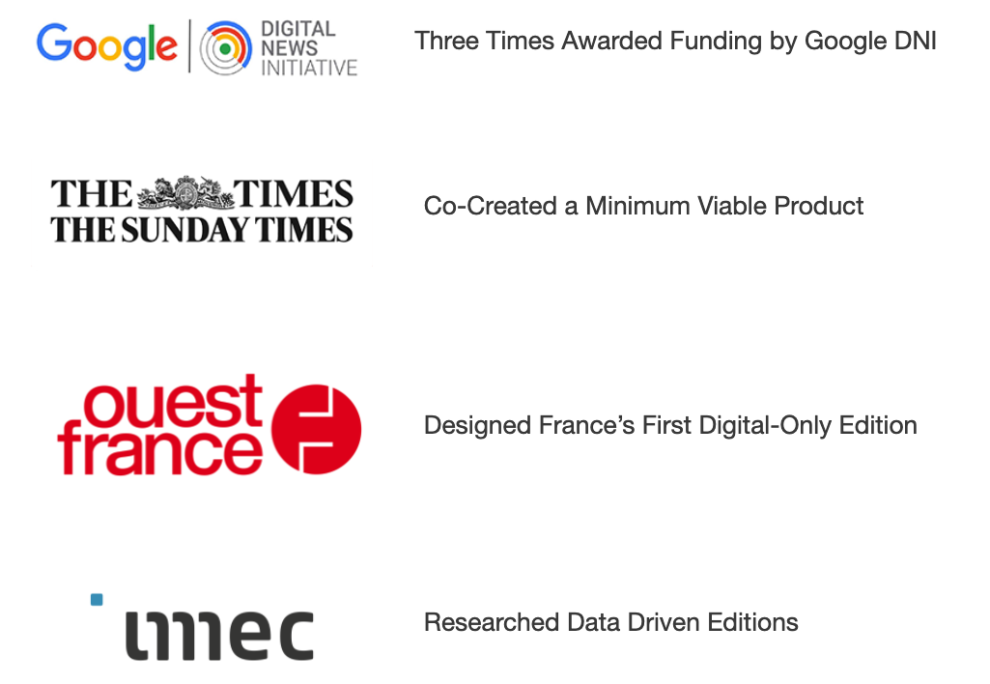
662 research projects of different sizes and values were launched through the fund over the past 5 years. Some of them are already seeing results. At Twipe, we were fortunate to have received three rounds of Google DNI funding for projects in collaboration with publishers like NewsUK, Mediahuis and Ouest-France.
Here’s a selection of other interesting projects that caught our attention in the past
- Cross-platform personalisation through hyper-local news algorithms at Jysk Fynske Medier in Denmark
- Digitally enable bias detection in news articles with Belga News Agency in Belgium
- Voicegram: The power of text-to-speech & the human voice to hyper-local news with Le Télégramme in France
Scale through a Launch Partner Programme
To move from research towards scale, Launch Partner Programmes offer a great form of innovation and incubation. A successful launch partner programme relies on positive outcomes for both parties.
When engaging in a launch partner programme, the goal needs to be clear for all partners along with the structure. Ensuring these are aligned allows resources to be allocated appropriately. From here, the project can go through incubation phases right through to the launch phase smoothly. Along the way, partners will have to co-ordinate on different integration levels, preparation, live test, experiments and in depth analysis.
One example is the way The Telegraph worked towards their new unified app. Working in collaboration with Twipe, The Telegraph set out their vision of a new unified live news and edition app. With The Telegraph aiming to having 1 million paying subscribers by 2023 and their edition readers being amongst the most loyal, keeping their edition product central to the new product strategy was vital. An agile co-development process allows the teams to frequently adapt the product to reach the best possible standing. Following internal and consumer testing, the beta version of the app was officially launched in April 2021.
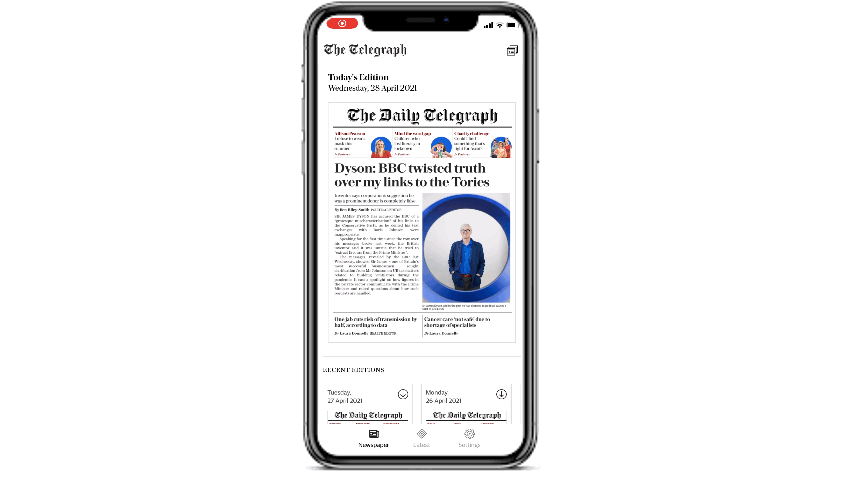
Another example of successfully testing ideas through Launch Partner Programmes comes from NRC in the Netherlands. With an ambition to adopt newsletter personalisation and automation in an experimental manner, NRC joined the JAMES Launch Partner Programme led by our incubation team. The programme has borne great success with NRC seeing their Middag newsletter achieving amongst the best results and allowing a better understanding for teams across the company of how automated newsletters could drive reader engagement.
Similarly the Daily Mail’s “Recommended for you” newsletter also originating in the JAMES Launch Partner Programme and now active as service for all subscriber, helped double growth in habitual reading for the UK publishers edition readers. The JAMES Launch Partner Programme continues to be open and is a great place to start in a personalisation innovation journey.
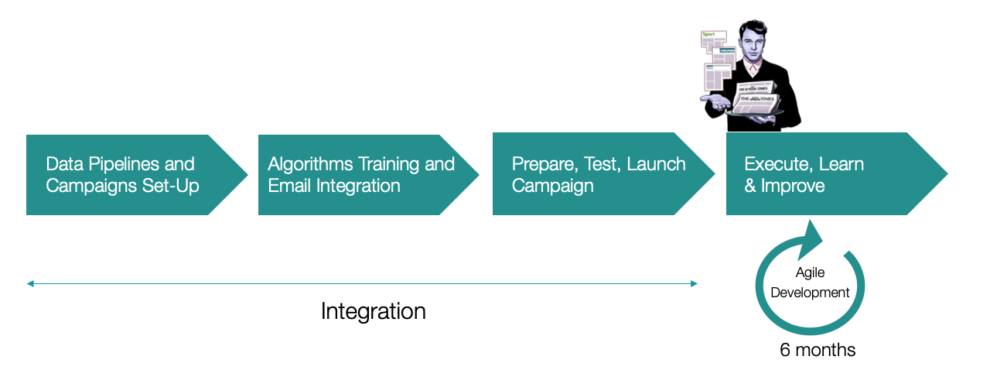
At Twipe, product innovation has been at the core since our founding in 2011 and continues to help our teams to keep a day one mentality. Contact our teams to engage in a test with premium digital edition publishing or personalisation this summer.
Other Blog Posts

Stay on top of the game
Subscribe to Twipe’s weekly newsletter to receive industry insights, case studies, and event invitations.
"(Required)" indicates required fields
